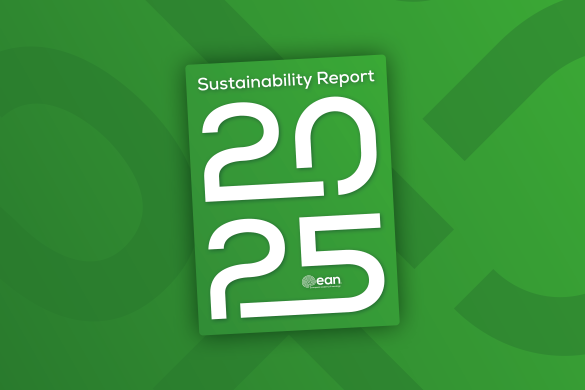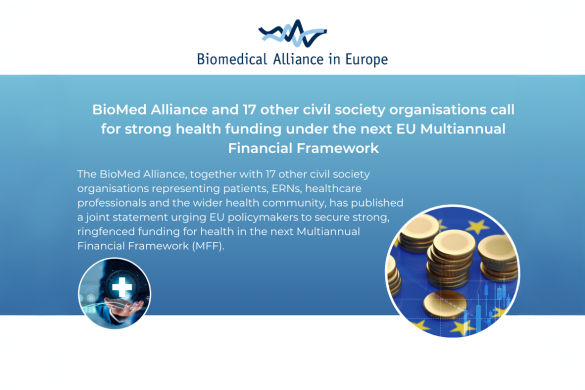by Viktoria Papp
Each month the EANpages editorial team reviews the scientific press for recently published papers of outstanding interest to neurologists. Below we present our selection for November 2023 (for our Paper of the Month for November, see here).
1. European Academy of Neurology guidelines on the treatment of cluster headache
The latest EAN evidence-based recommendations for cluster headache treatment were summarised recently and are recommended readingfor all physicians. A group of experts performed literature searches in PubMed (Medline), Science Citation Index, and Cochrane Library to find efficacy data on the different treatment options. The studies were evaluated based on the EAN recommendations for preparing neurological management guidelines and evidence level was graded according to GRADE. For evidence-based recommendations, only systematic reviews with randomised controlled trials (RCTs) and crossover trials (CTTs), and RCTs, CTTs, or open-label trials with ≥50 patients were included. The new guidelines also provide good practice statements and research recommendations based on other types of studies. Both attack and preventive treatment possibilities are discussed in detail regarding the evidence level, strength of recommendation, effectiveness, special consideration, and dosage of each medication. Besides medications, several invasive and non-invasive procedures are summarised to give the most comprehensive overview of possible treatment management.
2. Efficacy and Safety of XEN1101, a Novel Potassium Channel Opener, in Adults With Focal Epilepsy: A Phase 2b Randomized Clinical Trial
A novel therapy with a small-molecule selective Kv7.2/Kv7.3 potassium channel opener (XEN1101) was tested in a phase 2b trial. These ion channels have an inhibitory function on the neuronal membrane depolarisation near the spike threshold and can prohibit epileptic hyperexcitability. The study was a randomised, double-blind, placebo-controlled, parallel-group, dose-ranging adjunctive, multicentre investigation. The main aim was to test and compare the efficacy, tolerability, and safety of this oral drug in three different dosages and compare it with a placebo. Patients with focal-onset seizures were randomised and treated (157 male, 168 female). Among them, 285 completed the double-blind phase and could continue into the open-label extension phase. The drug at each dose resulted in a significant reduction in monthly seizure frequency compared to the placebo (42.9% vs. 18.2%) and was dose-dependent (52.8% [P < .001 vs placebo; IQR, −80.4% to −16.9%] in the 25-mg group, 46.4% [P < .001 vs placebo; IQR, −76.7% to −14.0%] in the 20-mg group, and 33.2% [P = .04 vs placebo; IQR, −61.8% to 0.0%] in the 10-mg group). Also, the number of responders was significantly higher in the treatment arms compared to placebo and showed similar dose-dependency. Post hoc analysis showed a rapid onset of effect, and seizure frequency was already reduced after a week of treatment. The drug was generally well tolerated; the most frequent side effects were dizziness (24.6%), somnolence (15.6%), and fatigue (10.9%). No difference was registered in the occurrence of severe side effects between the active and placebo groups. This novel drug was associated with a dose-dependent reduction in seizure frequency, supporting the potential of Kv7 voltage-activated potassium channels as a therapeutic target and endorsing the further development of XEN1101 for the therapy of focal-onset seizures.
3. Underlying Causes of TIA and Minor Ischemic Stroke and Risk of Major Vascular Events
This international registry study evaluated the risk of major vascular events such as stroke, acute coronary syndrome, or cardiovascular death in patients with transient ischaemic attack (TIA) or minor ischaemic stroke with co-existing atherosclerosis, small vessel disease (SVD), cardiac pathology, and dissection. The study population was recruited from 21 countries. Altogether, 4,789 patients were included between 1 June 2009 and 31 December 2011, and 3,847 of them completed the five-year follow-up. The ASCOD classification system, representing five primary stroke etiologies with varying degrees of causation, was applied to classified patients. Based on ASCOD there were 998 patients with probable or possible causal atherosclerotic disease. Among the 998 patients, 489 (49%) had small vessel disease and 275 (28%) had cardiac diseases. The comparison of these patient subgroups with patients without these comorbidities showed that patients with causal atherosclerosis had a five times higher risk of developing major vascular events at five years; patients with causal small vessel disease had 2.5 times higher risk; and patients with causal cardiac findings had four times higher risk. The study’s findings demonstrate different risk rates of major vascular events based on the etiology of TIA or minor stroke, highlighting the need for adjusted secondary prevention according to the underlying pathophysiology.













